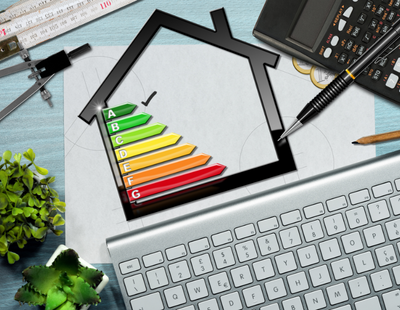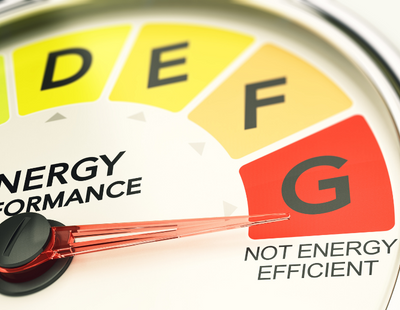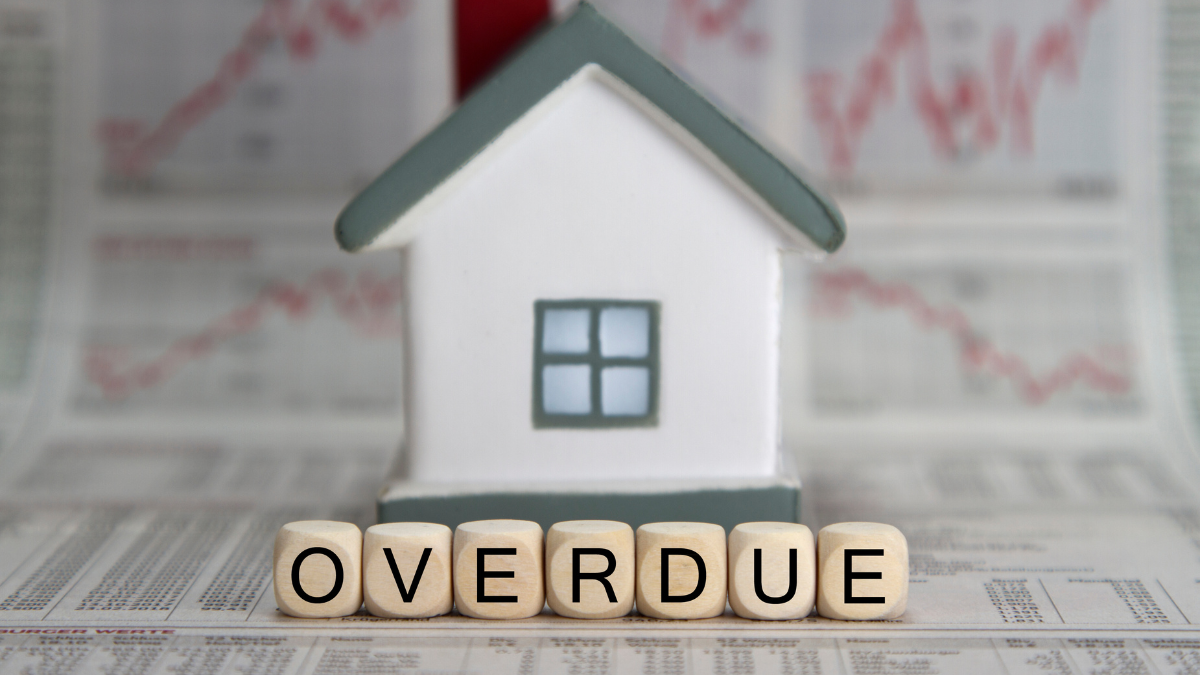As 2025 gradually approaches, the question of how the private rented sector decarbonises and becomes more energy efficient is becoming more and more urgent.
More than ever, landlords across the market are aware of the significant challenges which will need to be overcome if the Government’s ambitious targets are to be met.
At this stage it’s very difficult for landlords to take clear steps towards achieving decarbonising of their properties, or to make them more energy efficient, until the Government provides guidance on minimum energy efficiency standards. By setting a target people will know where to go, and how they can plan.
A big (and obvious) concern as regards this target is the expense.
Two years on from the closure of the Government’s consultation on Minimum Energy Efficiency Standards (MEES) in the private rented sector, many landlords are worried that upgrading their properties will cost a great deal, especially if they manage and own a larger portfolio.
The costs of retrofitting their properties will be significant. So, with net zero the final goal, what will landlords need to do to get there? Without clarity from government, these individuals will be unable to determine what precisely needs to be done, as well as how much they need to budget for improvements.
What is the cost of a heat pump and the associated retrofit for the property? Do I need external insulation? Does the current insulation meet future standards? Can I do the work to the property? Will the local authority allow me to do the works? Is there a workforce able to deliver it within the timescales that government have indicated?
Each of these questions hang over landlords.
The NRLA believes the timescales consulted on by the Government’s are now unfeasible, and that a new timetable of action should be published, with staging posts to net zero to bring clarity and confidence to the sector.
It’s also important to note that cost-of-living pressures have had a huge impact on the delivery of such schemes.
The cost of materials has increased dramatically (in some cases even doubling) while the price of labour has increased substantially. For landlords to meet their obligations, the Government should reintroduce the landlord energy saving allowance. It should also provide support in the transition via pre-approved planning and the development of a skilled workforce to deliver the required works.
They should also look at developing one stop shops which give advice on the transition for all property owners.
Previous research conducted by thinktank Localis highlighted that in some local authorities the estimated costs of improving home energy can be around 50 per cent of property values.
While properties elsewhere may have higher value, the cost of works can still be prohibitive. By creating a price cap based on the local housing allowance, this will allow for retrofit and for grants to targeted at those properties which are hardest to reach.
This will still be a challenge for many landlords as they will not have the equity in the property to make the changes.
Additionally, to assist landlords in meeting decarbonisation/energy efficiency, the Government should look at introducing Building Renovation Passports – a measure which the NRLA has campaigned for consistently over recent years.
This will allow landlords to know where the property is and the route that it must go in order to get to the final destination. This will allow landlords to know what they need to budget for and plan the changes to the property.
But overall, what the sector needs is more clarification and support from the Government when it comes to decarbonisation, energy efficiency and targets.
With the drive to make homes warmer and have less of an impact on the planet, clarity on what that direction of travel is and the road map to how to achieve it is needed more than ever.
* Gavin Dick is Local Authority Policy Officer at the National Residential Landlords Association *
Want to comment on this story? Our focus is on providing a platform for you to share your insights and views and we welcome contributions.
If any post is considered to victimise, harass, degrade or intimidate an individual or group of individuals, then the post may be deleted and the individual immediately banned from posting in future.
Please help us by reporting comments you consider to be unduly offensive so we can review and take action if necessary. Thank you.














.jpg)









%20(002).png)




.png)





Join the conversation
Jump to latest comment and add your reply
The Government also needs to overhaul the EPC assessment system itself. As things stand replacing a gas boiler with a heat pump will degrade ancEPC!?!?!
I found this out to my cost. Replaced a gas fire with a split system heat pump and went from fitting a new boiler on my previous EPC D, to upgrade to C to having to spend approximately 60k to upgrade to a C after installing the heat pump. Absolute joke as the saving on bills was estimated at approx 100 pounds per year.
Will it?
A heat pump reduces the EPC because it is powered by electricity & currently EPCs are a measure of cost. This is supposed to have changed but no sign of the new assessment that was due at the end of 2022.
EPCs are not fit for purpose and until they are sorted out nothing of any value can happen. Electric heating is greener than gas but gas heated house gets a better EPC rating than electricity. EPCs are cost efficiency not greenness!
agree entirely . I have a number of new build apartments that are d rated because they have electric central heating but are fully doubles glazed and insulated .
A great article, to which I fully agree. We have a number of terraced houses within our portfolio which are currently in band D. We do not intend to carry out improvements until the EPC situation is properly clarified by the Government. It is quite disgraceful for both Landlords and Tenants that we are all in limbo!
You won't have to spend too much to get them to a C Rating, most will cost just a few hundred pounds if they have double glazing.
Colin. What a stupid comment. How on Earth do you know?
All the Ds I've got required internal or external wall insulation. I can assured you it won't cost a few hundred pounds.
I know because I know the rules and I know the changes coming 👍
Colin, I would be interested to know a bit about yourself. How do you know the rules, are you an EPC assessor or do you have some other knowledge?
As the EPC C is not yet law, how do you know what is coming? Do you have information not available to the general public?
Colin. Stop making stupid comments. My fully insulated fully double glazed 1950's D rated property had over £60k in recommendations from the EPC assesor to bring it down to a C and the annual energy savings only amounted to just over £100.
Will it happen, will it be watered down, there's a lot of unanswered questions, I've just got a Victorian terraced up to a 'C' at minimal cost, replacing a 25 yr old boiler (£1750) increased loft insulation (350mm) and LED light bulbs got me there, I don't mind spending that, but I'm as sure as hell not going to be spending £10,000 on any property to get a 'C'
That’s great that the assessor was happy to give you a C rating. I have a couple of similar properties with modern boilers, loft insulation and low energy light bulbs but only achieve D ratings. The recommendations for achieving a C rating were to first, insulate the walls either externally or internally, then secondly, to insulate the floors.
In the case of external insulation, apart from the cost, I foresee all kinds of damp problems, as these Victorian properties were built to allow any damp to evaporate out of the bricks externally. Any dampness would be directed inwards. Internal insulation is also not an option as it would involve the removal of radiators, kitchens, boilers, bathrooms etc. Also narrow hallways would become even narrower.
I can only imagine that these proposals will be diluted in the case of solid wall properties or landlords will be selling in droves. Me included.
Just another reason why the Government are going to have to pick up a MASSIVE Bill for Homelessness.
LLs are already selling up in their droves and this will be another nail in the coffin of the PRS.
50% of my portfolio has already been sold, of which non have been bought by Private Landlords.
So that’s another 6 properties that are permanently off the rental market.
Because of the recent reduction in Capital Gains Allowances LLs have no reason to sell at one a year to use the CGT allowance and from my poin of view the remaining 5 that I have will be gone within the next 2 years.
Nothing is being built to take up what is an already horrendous shortfall.
B&Bs and cheap hotels will take up the slack initially but once the government gets into them with regards all there constant meddling these people will soon pull out and the Homeless issue will be Mega.
I have planned for a full sell off, the CGT changes have just made it simpler. In terms of hotels to house the homeless 😉 nope… the cheap ones are full of visitors from over the channel.
My electrician has just evicted a disabled tenant, she had stopped paying her rent and was living in complete filth, for the past 2 wks she has been living in a Travel Lodge at £70 per night, no private landlord is going to touch her so for the foreseeable future the council will be picking up her £70 a night hotel bill
It is especially frustrating that energy efficiency measures are mainly regarded as Capital improvements, so aren't tax deductible until we sell. Some of us will die before we sell so in real terms virtually all of these measures need to be regarded as totally not tax deductible. We are expected to pay for them out of income we have already paid 40% tax on.
It's a bit of a mess trying to work out what is classed as a tax deductible replacement and what is classed as a non tax deductible Capital improvement. As far as i am aware double glazing to replace single glazing is OK as that's just the modern equivalent. Replacing 50mm of loft insulation with 250mm may be OK but simply adding 200mm on top of the 50mm is probably a Capital improvement. Replacing an old boiler with a condensing boiler could be argued either way (and I have no idea who would win).
The one I find especially frustrating is solar panels. When the Feed in Tariff existed they were an absolute no brainer. Minimal disruption for the tenant as installation only takes a day. They usually increase the EPC by about 10 points. The tenant gets much cheaper electric bills. The landlord got the FIT payments so it paid for itself eventually. Technology has moved on so the FIT payments were abolished for new installations in 2019. If commercial landlords put solar panels on commercial buildings they are a tax deductible expense and they can charge their tenant for the electricity produced by the panels. As residential landlords we can't. The panels are a Capital improvement and the only payment we will receive is a derisory export payment for any electricity our tenants don't use. I'm just having solar panels and batteries on 2 HMOs. When I ordered them I had no idea quite how bad the tax treatment was for them these days. My previous ones have been some of my best ever purchases. Any electric I buy from Octopus Energy is a fully tax deductible expense as it is included in the rent. Any electric from the solar panels is deemed to be valueless if it is used in the HMO. It appears I can't offset it in any way against the cost of the equipment to generate that electric. The only payment I can receive is the export payment of between about 5p and 15p per kWh for a very small amount of surplus generation.
I'm still a huge fan of solar and may well have it on a couple more properties as it is far less disruptive than having to evict tenants to do solid floor insulation. Certainly on ones that are close to needing a new roof the in roof solar panels look like a very attractive option.
I make my own decisions based on common sense as to what expenses are tax deductible and itemise them in the notes on the tax return.
I have never had anything challenged by HMRC and feel my approach is totally reasonable especially with the tiny amounts of tax paid by Amazon, Google etc.
If the taxman wants to go back 5 years or so, fine but since I haven't hidden anything I don't expect any penalties or repayment going back the 20 odd years that I have given the taxman the benefit of my common sense.
There’s a lot of scaremongering going on about the Minimum Ratings.
Solid Wall insulation will almost always be over the Maximum required spend even if it’s moved up to £10k
Most D Rated properties will be able to get to a C Rating for just a few hundred pounds with changes coming in for EPCs.
I’d guarantee I can get almost any property to a C Rating once the changes come in.
Don’t Panic as a well known TV Character used to say!
Let's not forget the benefit the Planet has had from The additional C02 that is in the atmosphere .plants and trees grow more vigorously and need less water. Satellite pictures shew that since1985 the Earth has become 15 % greener. That is why horticulturist pump c02 into their greenhouses to promote growth
Yes scaremongering is right what does Mayor Mr Sadiq Khan know about it, he thinks he knows all and the billions worth of damage he is doing a law all to himself far too much power go one man.
Too much talk about pollution and we have the cleanest cars ever.
It seems he doesn’t know anything about real pollution like it was in the early 1960’s with every chimney bellowing out black & yellow smoke.
London didn’t get christened the big smoke for nothing.
There was no such thing as unleaded Petrol, virtually every corner had Paraffin Oil Dispenser Machine Esso Blue or Pink, if today generation had it they would have real cause to complain about condensation/ mould.
The most damage and cause of early death I see is self inflicted by stupid smoking.
No point in asking Mr Khan about above the Pollution he doesn’t know he wasn’t even born, it jut all a Money Grab to him it’s the only way he’ll get it. no hope of him earning anything in the rest world.
Not much Nitrogen Dioxide from millions of Diesel Vehicles though was there!
No problem pay £12.50 pd pollute away, I thought adBlue was supposed to help with that.
People should be more concerned about about the huge amount of nitrogen going into the food chain.
The government does not intend that we will carry out these energy improvements the cost cap will be raised to probably £30k to £40k and the EPC ill be raised to B or even A it is intended we will not be able to achieve this and will be not allowed to rent our properties we will then not be able to pay the mortgage and the council will impose a 400% council tax penalty on the empty property of course our properties will be repossessed and to be "FAIR TO TENANTS " our properties will be sold to the councils at a fraction of their true value we will of course be still liable for the debt the councils who now have our properties will of course be exempt from EPC rules
This makes complete and total sense!!! ...And will help put me out of my misery!! My instinct is telling me to sell but I'm clinging to the dream that I can leave my children a small business to insulate them from the economic blunders of this pathetic country we now live in. Instead I think Iwill sell and gift a house to each son. The worry is becoming too great now..I'm sick of waking up each morning and scanning the news for a glimmer of hope. Thank you for your insight, I believe you are totally right.
Regarding EPC’s I have some 1930’s SemiDetached & Terraced houses, all rated “D” even though all have Cavity walls & pump filled with either poly beads or fibre with the 25 year guarantee. Also all double glazed, increased loft insulation and new Boilers mainly Vaillant Combi’s needles to say low energy bulbs (incandescent bulbs are banned). What next ?.
Mr Altman, that is the way we are going. I believe that our rulers want a caliphate ! Think about it. Further the government wants conflicting things and EPC dithering shows that. One big scandal coming up is that foreign OSB and plywood is very poor, and they are the structures of highly insulated and system built property. My certain experience is they rot like mad !!
We have an extra layer of concrete at the front and rear external wall. The builder says we do not need another extra layer, as this is insulation built at the time of the originak building work done. However, the EPC is marked as D, stating floor and walls need insulation for it to be a C. As the EPC is due this summer and we are in the process of refurbishing this terraced house we thought we will try and resolve that issue, along with updating to 400mm of loft insulation to bring it to EPC level. Ww can see an external walls at the front and the buiilder says that there is an insulation between the 2 layers of brick walls at the rear. Do EPC people not use some kind of gadget ir barometer to measure the level of insulation or heat conservation or something more accurate. They just say no insulation assumed. For another house, the EPC guy did not check the lift and put down, no insulation assumed. 2 months before the EPC, I had updated the lift insulation from 100mm to 400 mm. When I told him, he wanted evidence I sent an invoice to prove it and he gave extra points and became higher D, but not C by a few points. Some walls were injected with insulation foam and plastered over, some years ago.
I’am not sold on all this insulation businesses at all.
My Nephew has built a new Detached House fit for a king, concrete sub- floor 100mm king span over a network of under floor heating water pipe system screeded over, all connected to manifolds system all individual twin connections so any separate one can be isolated. It’s a heat pump system and don’t pretend to know how it all works, I seen there a great big circular hot water tank looks similar to a mega flow.
Concrete floors on first floor too with dropped ceilings accommodating another lot of foam installation. The roof as well thoroughly insulated, all treble glazed windows. There is some ventilation unit as well. I am told if heating is off for a day it will only drop one degree.
Anyway its not for me at all. I am an outdoor person and wouldn’t be able to live like that.
He has a Mortgage that will take him his life to pay off and struggling now.
I would have no qualms if the government turned around and said landlords must have low energy lighting, condensing boilers (if gas central heating), thermostats, 300mm loft insulation, double-glazing (if not a heritage area), and floor insulation where accessible to a basement. Plus the usual small details like draft proofing at the bottom of external doors etc.
All fine. Clear. At least we know where we stand, and although there could be some expense there, it shouldn't be massively expensive and it will make the living experience more comfortable for the tenant.
It's when they start talking about ''EPC C'' which becomes subjective and often entails internal wall insulation on these old terraced houses. It actually doesn't make a huge difference in terms of energy savings, but the disruption is massive and not realistic with a tenant living in the premises. What are landlords supposed to do, start ripping out tenant's kitchens to put internal wall insulation? This is utterly absurd. It also leads to possible long-term problems with damp/condensation as the house cannot breathe as it was initially built to do.
Please login to comment